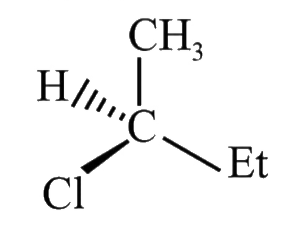Which of the following have distored octahedral structure ? .
SF6
PFΘ6
SiF2−6
XeF6
The correct Answer is:D
To determine which of the given compounds has a distorted octahedral structure, we will analyze each compound step by step, focusing on their hybridization and molecular geometry.
Step 1: Analyze SF6
1. Valence Electrons: Sulfur (S) has 6 valence electrons.
2. Bonding with Fluorine: Each fluorine (F) atom requires 1 electron for bonding. Since there are 6 fluorine atoms, all 6 of sulfur's electrons are used for bonding.
3. Bond Pairs and Lone Pairs:
- Bond pairs = 6 (one for each F)
- Lone pairs = 0
4. Hybridization: Using the formula:
Hybridization=12(Valence electrons+Monatomic atoms−Cationic charge+Anionic charge)
=12(6+6−0+0)=6
This corresponds to sp3d2 hybridization, indicating an octahedral structure.
Step 2: Analyze PF6^-
1. Valence Electrons: Phosphorus (P) has 5 valence electrons, and with the negative charge, it has a total of 6 valence electrons.
2. Bonding with Fluorine: Each fluorine atom requires 1 electron, and there are 6 fluorine atoms.
3. Bond Pairs and Lone Pairs:
- Bond pairs = 6
- Lone pairs = 0
4. Hybridization:
=12(6+6−0+0)=6
This also corresponds to sp3d2 hybridization, indicating an octahedral structure.
Step 3: Analyze SiF6^2-
1. Valence Electrons: Silicon (Si) has 4 valence electrons, and with the 2 negative charges, it has a total of 6 valence electrons.
2. Bonding with Fluorine: Each fluorine atom requires 1 electron, and there are 6 fluorine atoms.
3. Bond Pairs and Lone Pairs:
- Bond pairs = 6
- Lone pairs = 0
4. Hybridization:
=12(6+6−0+0)=6
This corresponds to sp3d2 hybridization, indicating an octahedral structure.
Step 4: Analyze XeF6
1. Valence Electrons: Xenon (Xe) has 8 valence electrons.
2. Bonding with Fluorine: Each fluorine atom requires 1 electron, and there are 6 fluorine atoms.
3. Bond Pairs and Lone Pairs:
- Bond pairs = 6 (for the 6 F atoms)
- Lone pairs = 2 (since 8 - 6 = 2)
4. Hybridization:
=12(8+6−0+0)=7
This corresponds to sp3d3 hybridization, which typically indicates a pentagonal bipyramidal geometry. However, due to the presence of lone pairs, the structure becomes distorted octahedral.
Conclusion
Among the compounds analyzed, only XeF6 has a distorted octahedral structure due to the presence of lone pairs.
Final Answer
The compound with a distorted octahedral structure is XeF6.
---
1. Valence Electrons: Sulfur (S) has 6 valence electrons.
2. Bonding with Fluorine: Each fluorine (F) atom requires 1 electron for bonding. Since there are 6 fluorine atoms, all 6 of sulfur's electrons are used for bonding.
3. Bond Pairs and Lone Pairs:
- Bond pairs = 6 (one for each F)
- Lone pairs = 0
4. Hybridization: Using the formula:
Hybridization=12(Valence electrons+Monatomic atoms−Cationic charge+Anionic charge)
=12(6+6−0+0)=6
This corresponds to sp3d2 hybridization, indicating an octahedral structure.
1. Valence Electrons: Phosphorus (P) has 5 valence electrons, and with the negative charge, it has a total of 6 valence electrons.
2. Bonding with Fluorine: Each fluorine atom requires 1 electron, and there are 6 fluorine atoms.
3. Bond Pairs and Lone Pairs:
- Bond pairs = 6
- Lone pairs = 0
4. Hybridization:
=12(6+6−0+0)=6
This also corresponds to sp3d2 hybridization, indicating an octahedral structure.
1. Valence Electrons: Silicon (Si) has 4 valence electrons, and with the 2 negative charges, it has a total of 6 valence electrons.
2. Bonding with Fluorine: Each fluorine atom requires 1 electron, and there are 6 fluorine atoms.
3. Bond Pairs and Lone Pairs:
- Bond pairs = 6
- Lone pairs = 0
4. Hybridization:
=12(6+6−0+0)=6
This corresponds to sp3d2 hybridization, indicating an octahedral structure.
1. Valence Electrons: Xenon (Xe) has 8 valence electrons.
2. Bonding with Fluorine: Each fluorine atom requires 1 electron, and there are 6 fluorine atoms.
3. Bond Pairs and Lone Pairs:
- Bond pairs = 6 (for the 6 F atoms)
- Lone pairs = 2 (since 8 - 6 = 2)
4. Hybridization:
=12(8+6−0+0)=7
This corresponds to sp3d3 hybridization, which typically indicates a pentagonal bipyramidal geometry. However, due to the presence of lone pairs, the structure becomes distorted octahedral.
Among the compounds analyzed, only XeF6 has a distorted octahedral structure due to the presence of lone pairs.
The compound with a distorted octahedral structure is XeF6.
Topper's Solved these Questions
- CHEMICAL BONDING AND MOLECULAR STRUCTUREBOOK - CENGAGE CHEMISTRY ENGLISHCHAPTER - CHEMICAL BONDING AND MOLECULAR STRUCTUREEXERCISE - Exercises Single Correct (Bond Angle)
10 Videos
- CHEMICAL BONDING AND MOLECULAR STRUCTUREBOOK - CENGAGE CHEMISTRY ENGLISHCHAPTER - CHEMICAL BONDING AND MOLECULAR STRUCTUREEXERCISE - Exercises Single Correct (Resonance And Formal Charges)
10 Videos
- CHEMICAL BONDING AND MOLECULAR STRUCTUREBOOK - CENGAGE CHEMISTRY ENGLISHCHAPTER - CHEMICAL BONDING AND MOLECULAR STRUCTUREEXERCISE - Exercises Single Correct (Dipole Moment)
16 Videos
- ATOMIC STRUCTUREBOOK - CENGAGE CHEMISTRY ENGLISHCHAPTER - ATOMIC STRUCTUREEXERCISE - Concept Applicationexercise(4.3)
19 Videos
- CHEMICAL EQUILIBRIUMBOOK - CENGAGE CHEMISTRY ENGLISHCHAPTER - CHEMICAL EQUILIBRIUMEXERCISE - Subjective type
1 Videos
Similar Questions
Knowledge Check
Which of the following does not have a linear structure?
ABeCl2BSO2CC2H2DHgCl2
Which of the following represent octahedral void ?
View SolutionWhich of the following is the enantiomer of the structure?

View SolutionWhich of the following RNAs have clover leaf structure?
View SolutionWhich of the following RNAs have clover leaf structure?
View SolutionWhich of the following have a linear structure?
View SolutionWhich of the following have a linear structure?
View SolutionWhich of the following crystals have hexagonal structure ?
View Solution
